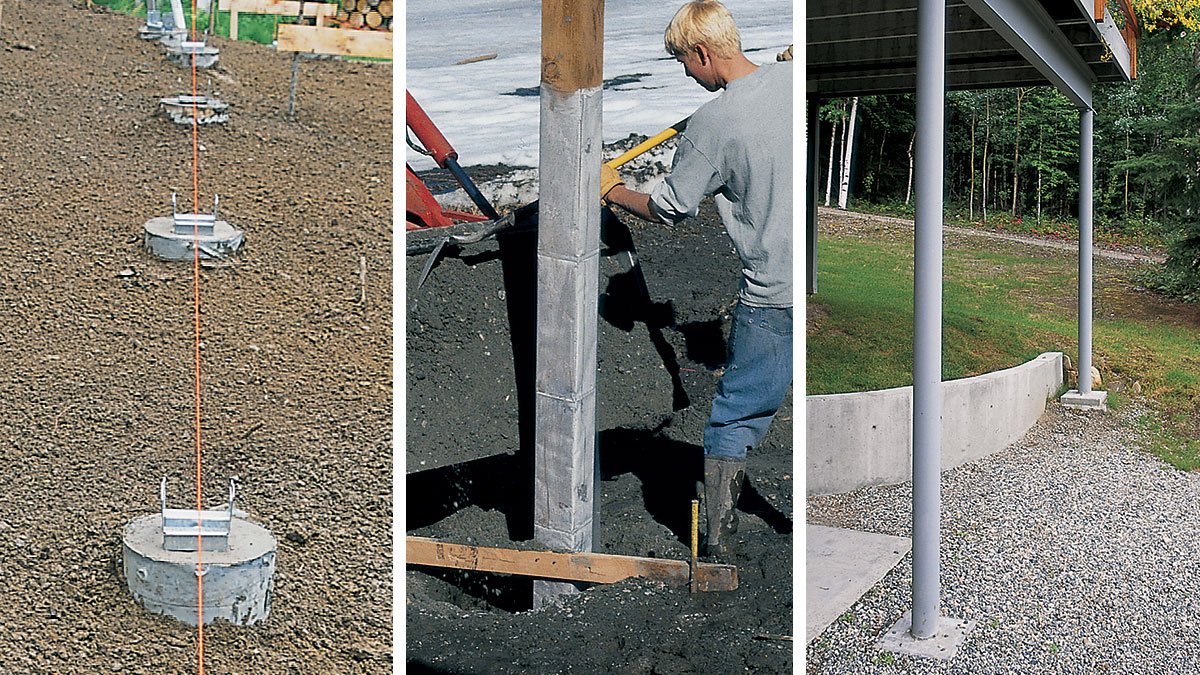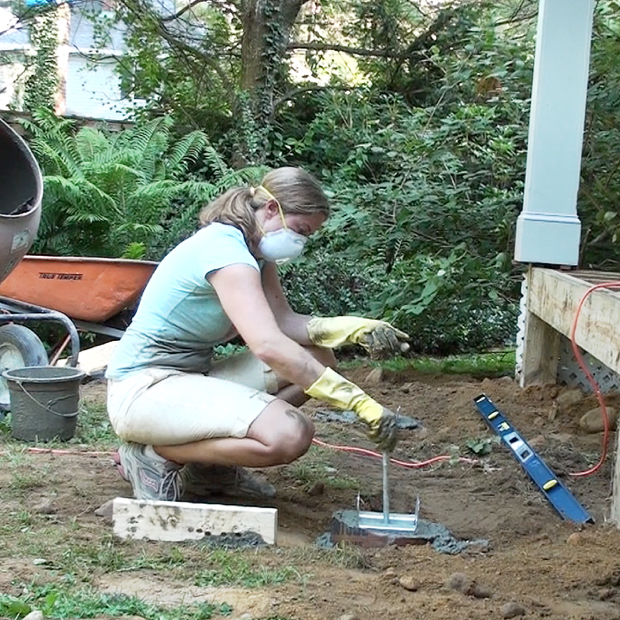Make Certain Security and Longevity With Correctly Set Up Deck Footings
Deck footings might not be the most glamorous facet of deck construction, but they play a vital duty in ensuring stability and durability. In this conversation, we will explore the value of proper deck footings, variables to consider during installment, various types of footings available, step-by-step installation overview, and maintenance ideas for ensuring resilient footings.

Relevance of Correct Deck Footings
Why are properly set up deck footings essential for the security and durability of your deck? Deck footings are the foundation on which the deck relaxes, transferring the load from the deck to the ground.
To start with, effectively mounted deck footings disperse the weight of the deck evenly, protecting against any kind of unequal settling or sinking. This is particularly essential in locations with unstable soil, as it aids to reduce the risk of the deck falling down or shifting. Furthermore, well-installed grounds make sure that the deck continues to be level, protecting against any architectural damage that can happen when a deck becomes unequal.
Second of all, appropriately mounted grounds supply a strong anchor for the deck, protecting against excessive motion and guide. This aids to keep the structural integrity of the deck, decreasing the threat of injuries or accidents. It also minimizes the deterioration on the deck, enabling it to stand up to the elements and normal use for a longer period of time.
Factors to Think About for Deck Ground Installment
When mounting deck footings, there are numerous vital variables to consider for proper installation. Different soil kinds have different load-bearing capabilities, so it is critical to carry out a dirt examination to ensure the footings can support the weight of the deck and its residents. By taking right into account these aspects, you can ensure the appropriate setup of deck grounds and appreciate a durable and secure deck.
Types of Deck Grounds to Select From
There are a number of various kinds of deck grounds readily available for you to select from. Each type has its very own advantages and drawbacks, so it's necessary to consider your certain demands and the problems of your deck prior to making a decision.
One common sort of deck ground is the concrete footing. This includes digging openings in the ground and putting concrete right into them to produce a solid structure. Concrete footings are durable and supply outstanding security, making them suitable for decks in areas with tough dirt problems or high wind loads.
One more option is the helical pier footing, which is composed of a steel shaft with helical plates that are screwed into the ground. These footings are quick to set up and can be utilized in various dirt kinds, including sandy or clay soils. They are also adjustable, enabling simple progressing of the deck.
Sonotube footings are one more popular choice. These grounds are created by positioning a cardboard tube in a hole and loading it with concrete. Sonotube grounds are relatively very easy to set up and give adequate stability for smaller decks or in locations with much less demanding soil problems.

When choosing the sort of deck footing, it's essential to consider aspects such as dirt problems, deck size and weight, neighborhood building ordinance, and individual choices. By choosing the ideal ground type, you can ensure the stability and long life of your deck.
Step-by-Step Overview for Setting Up Deck Footings

Figure out the place: Start by noting the exact position of each footing making use of stakes and string (Deck Footings). Take into consideration any kind of regional structure codes or guidelines pertaining to obstacle ranges
Dig the openings: Utilize a blog post hole digger or an auger to dig the openings for the grounds. Normally, a deepness of at the very least 36 inches is suggested for stability.
Level the holes: Guarantee that all-time lows of the openings are level (Deck Footings). This can be attained by making use of a degree or a straight board throughout the top of the openings
Include crushed rock: Place a layer of crushed rock at the end of each opening to improve drainage and prevent the ground from sinking right into the soil in time.
Place the ground kinds: Insert the ground forms right into the holes, ensuring they are focused and degree. Usage stakes to protect them in location.
Mix and pour concrete: Adhere to the directions on the concrete mix bag to prepare the concrete. Put the concrete into the ground types, filling them completely.
Smooth the surface area: Utilize a trowel to smooth the surface of the concrete and get rid of any type of air pockets. Enable the concrete to cure according to the supplier's guidelines.
Maintenance Tips for Resilient Deck Footings
Proper maintenance is critical for ensuring the over here long life and security of deck footings. By regularly inspecting and maintaining your deck footings, you can stop damage and potential safety and security dangers.
Normal cleaning is also essential for maintaining deck footings. Particles, dust, and plant life can accumulate around the grounds, which can result in moisture build-up and degeneration. Cleaning up the grounds consistently, using a brush or a stress washing machine, can assist prevent these problems and prolong the lifespan of your deck.
In enhancement to cleaning, it is important to keep the location around the footings clear this content of any kind of blockages. Avoid stacking things against the footings or allowing plants to expand as well near them. These blockages can trap dampness and cause the grounds to wear away in time.
Lastly, regular resealing of the grounds is suggested to shield them from dampness and various other ecological elements. Applying a water resistant sealant can help prevent water damage and extend the lifespan of the grounds.
Verdict
To conclude, proper installation of deck grounds is vital for making sure stability and longevity of your deck. Variables such as dirt type, load capability, and local building ordinance need to be thought about when choosing the right sort of deck grounds. Adhering to a step-by-step guide for setup and normal maintenance will certainly aid to guarantee the footings continue to be durable and long lasting.
In this discussion, we will discover the relevance of appropriate deck grounds, aspects to think about during installation, various kinds of footings readily available, detailed installation overview, and maintenance ideas for guaranteeing lasting check my site grounds. Deck grounds are the foundation on which the deck rests, moving the tons from the deck to the ground.One usual type of deck ground is the concrete footing. Place the ground forms: Put the footing forms into the openings, guaranteeing they are focused and degree.In verdict, appropriate setup of deck footings is important for guaranteeing stability and durability of your deck.